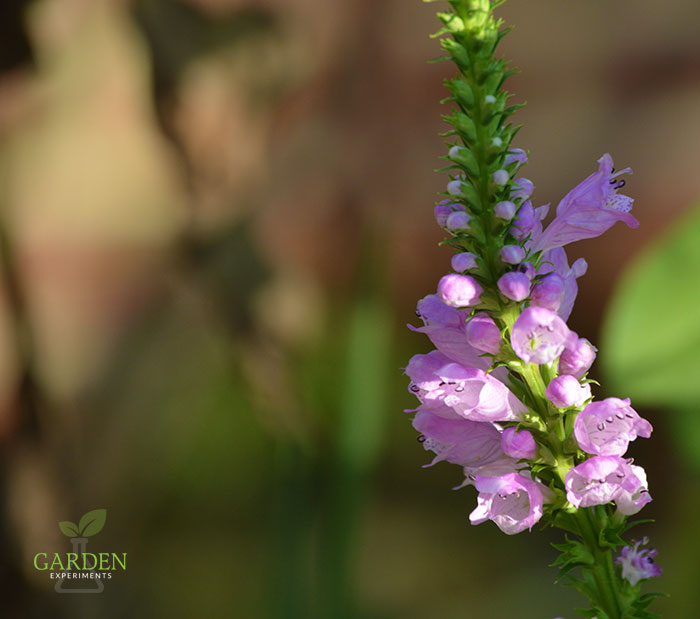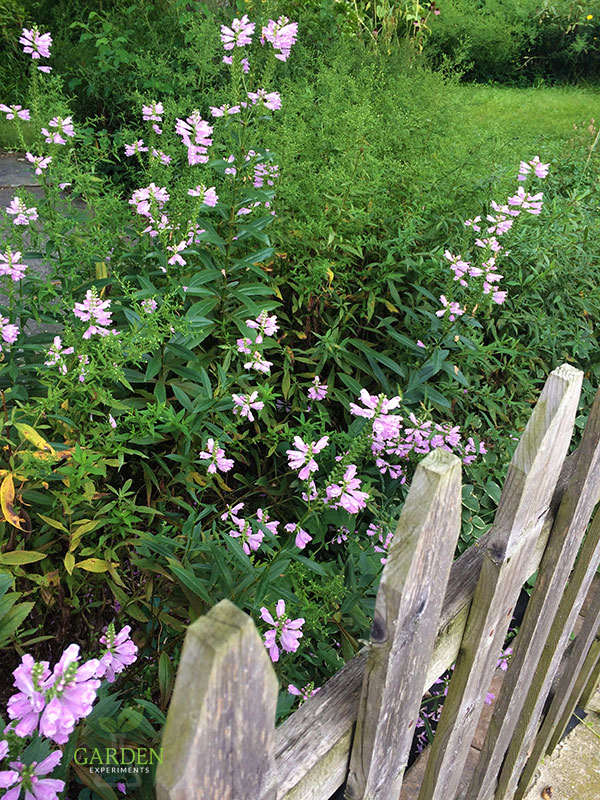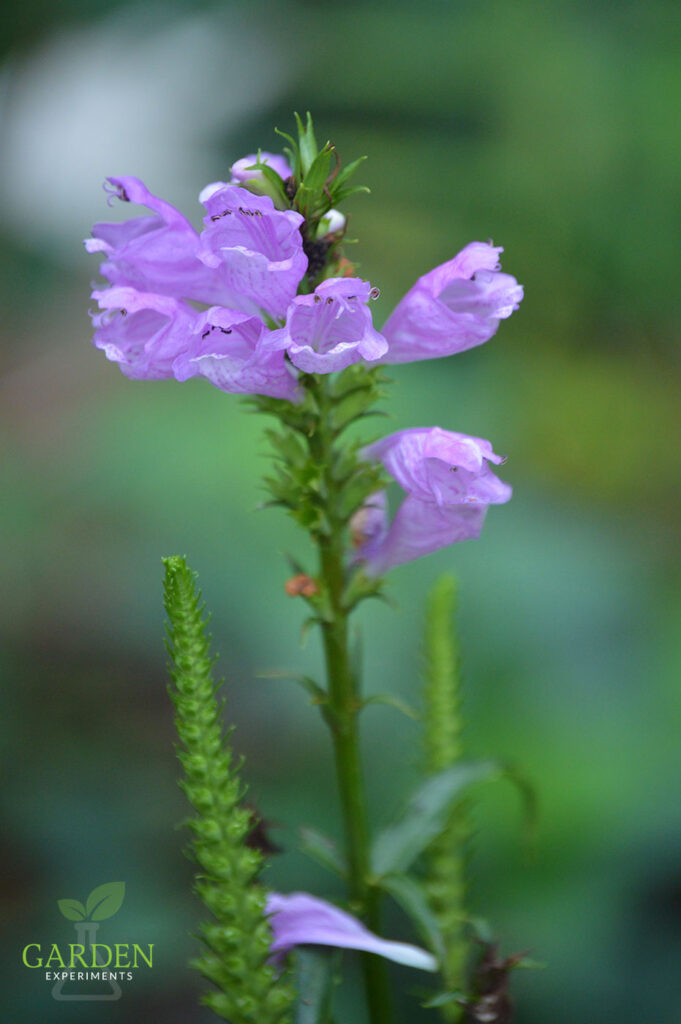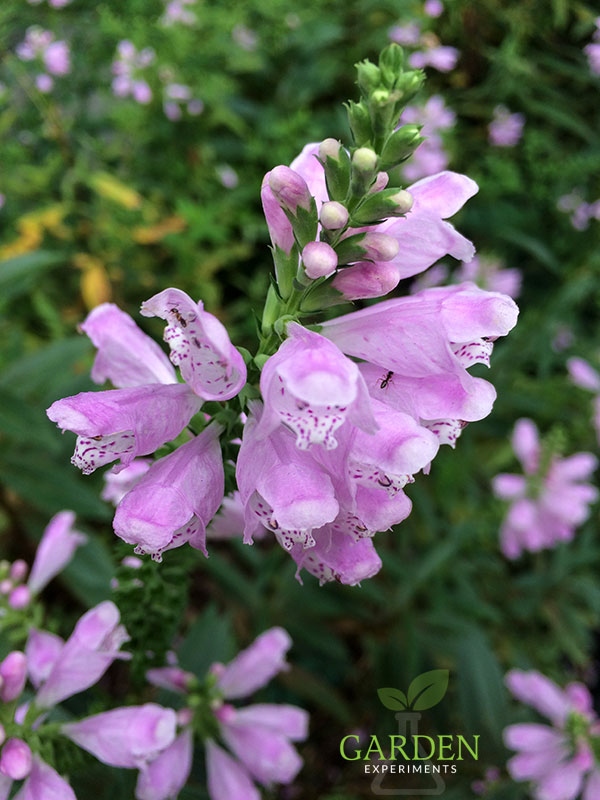The obedient plant is native to most of the U.S.. It produces lovely pale purple blooms in the fall when most things are shutting down. It’s also easy to dig up and divide.
Deer-resistant AND it can grow in clay soil – what’s not to love about obedient plants? Like all native plants, it is particularly suited for the growing conditions of its native range. That means it requires less maintenance and care than non-native plants.
How to Grow Obedient Plant
This perennial plant tolerates drought, is resistant to deer, and can be grown in clay soil with poor drainage. Some gardeners say it can even be grown in standing water of a few inches. It grows best in rich, humus soil with adequate drainage in full sun. It can also be grown in part-shade conditions as well.
When grown in full sun, the plants will grow tall and remain upright. They get up to 2 to 4 feet in height. In part-shade conditions as well as in very hot summer temperatures, you may need to stake the plants upright. Mine are always falling over, but the blooms are still pretty even when they are closer to the ground.
About Obedient Plant
Flowers
Neatly stacked columns of one-inch-long, small snapdragon-like flowers adorn the tall stems of obedient plants. The tiny flowers are light purple to pale lilac-colored, white, or dark purple. Each flower has dark purple dashed lines on its bottom inside lip. These dashed lines serve to direct pollinators to the nectar.
Bloom Time
The bloom time for this little plant is fairly long – about 1 to 1.5 months. It starts to bloom in mid-summer and continues until early to mid-fall in many locations. The flower heads bloom first from the bottom of the stem and progress upwards to the top of the spike.
Native Range
Obedient plants can be found throughout most of North America. They grow in prairies, along the banks of rivers, in swamps, and alongside roads. Their native range includes Montana eastward to the coast and southwards to Texas, including New Mexico and Utah, but excluding Colorado and Wyoming. See the NRCS distribution map for detailed information on native distribution. The eastern provinces in Canada are also in the native range for obedient plants.
Other common names for this plant include false dragonhead and lionheart. It is in the mint family (Lamiaceae).
Wildlife Benefits
Butterflies, hummingbirds, and bees are attracted to the flowers of the obedient plant. They feed on the nectar deep in the petals of this flower.



Is Obedient Plant Aggressive or Invasive?
When grown in rich soil and milder climates, obedient plants may spread rapidly and take over some gardens. Under these conditions, grow them in a container. You can also place them in a spot where you don’t mind if they spread.
In my part-shade, clay soil environment, I have not had a problem with the obedient plants spreading rapidly. In fact, I want to move them to a sunnier location. That way, I will have more blooms in the early fall.
Where Did it Get Its Name?
Where did the obedient plant get its name? When you gently move a flower to face it in another direction, it will stay in place for a while. Eventually, the flowers will move back to their original locations, but it’s kind of fun to style them.

